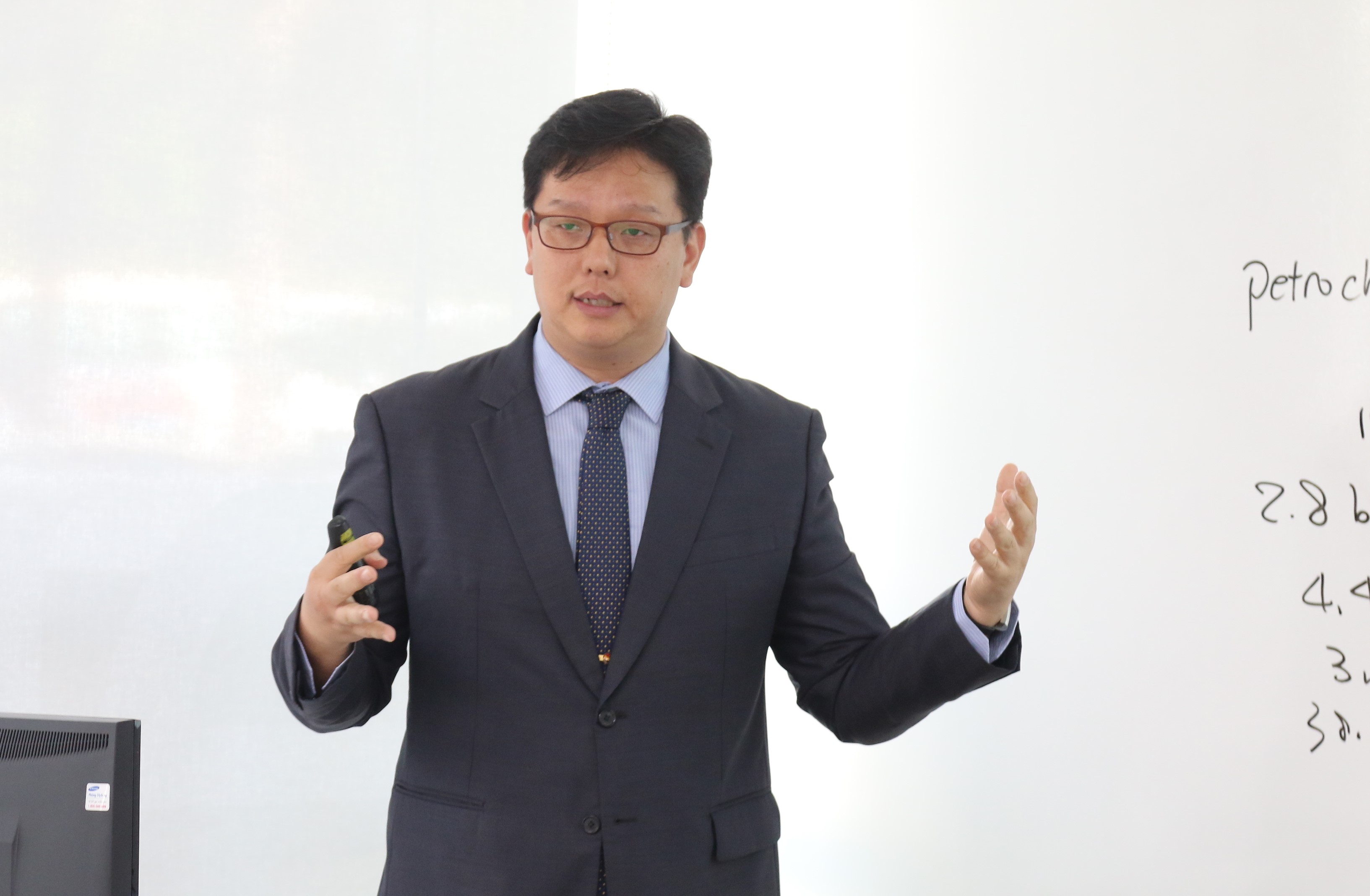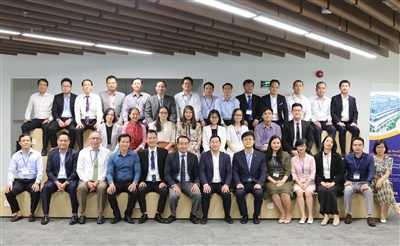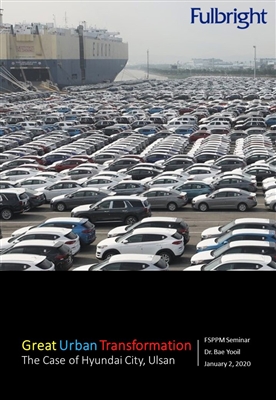On 2nd January 2019, Dr. Bae Yooil, Lecturer at Fulbright School of Public Policy and Management, presented on the development trajectory of the most prominent industrial center in Korea and analyzed theories explaining factors contributing to the successful transformation of this urban area.

From 1962 to 1980s, Ulsan has risen to become the most important industrial city in Korea and East Asia in a very short span of time. Three critical industries of the city are positioned to be automobile, shipbuilding and petrochemicals. With strong presence of Hyundai in the region via two industrial conglomerates Hyundai Motor Company and Hyundai Heavy Industries, Ulsan is nicknamed Hyundai City.
Many theories have been proposed to explain the rapid expansion and miracle transformation of this fishing village into a modern industrial city. The first perspective believed Ulsan achievement was made reality by the state-led development strategies. This belief relfected developmental state played by Korean and Japanese government during their national development stage after WWII. The government led private sector in strategic yet new industries and orchestrated industrial policies using subsidy, tariffs, loan guarantees, etc.

This explanationa is most evident trough the development of Korean automobile industry. After 1962, when Korea determined to develop Ulsan into a designational special industrial district, public enterprises producing components for foreign automobile manufacturers were established. The state implemented various favourable policies for foreign car manufacturer (i.e. Nissan), for example, tight control of imported finished products, exempted duty fee for car components and corporate taxes. Until 1967, Hyundai was permitted to produce its first complete-knock-down (CKD) car and before 1970, 90% of the parts were domestically manufactured.

On the other hand, some revisionists theorized that Ulsan miracle is enabled by active partipation of private sector. On-sided state intervention is not the only reason. Businesses faithfully followed in creative and timely manner to the state’s national development strategies. Chung Ju Yung, an industrial capitalist and founder of Hyundai, “was leaning toward to pay close attention to the policy documents put out by the Blue House and the Economic Planning Board (EPB) because they determined where domestic bank finance, overseas loan guarantees, export subsidies, tax-exemptions, reduced utility rates, tariff rebates, and more would be directed” (Joe Studwell, 2014, tr. 93). Furthermore, international dynamics, i.e. the alliance with U.S. help Ulsan manufacturers easier access to markets in developed countries.

In general, there are different perspectives on Ulsan development, instead of state centric view, adopting some key theoretical developments is necessary.
Related Articles

Merry Christmas and Happy New Year

High-Level Roundtable on “Adopting Basel II Standards in Vietnam Banking System”


